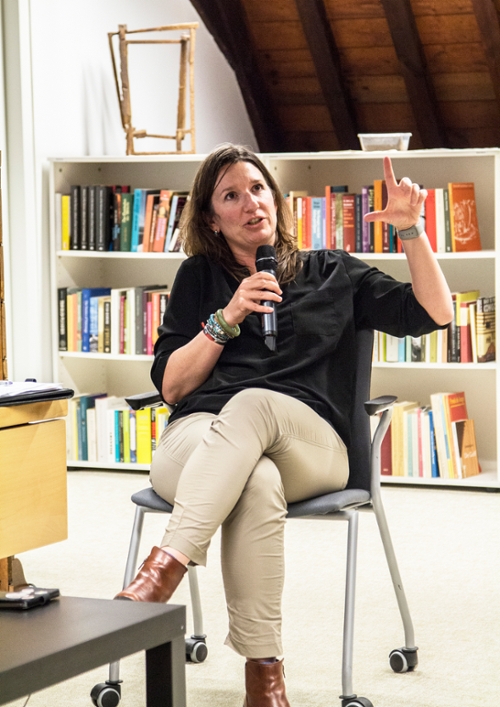Let Them Eat Clay
IPR anthropologist bridges science and art at Amsterdam workshop
Get all our news

IPR anthropologist Sera Young recently presented on pica, or the eating of earth.
Walking into an art installation of edible clay by artist Masha Ru, some visitors popped bits in their mouths, while others crushed it between their fingers and added it to their drinks. IPR anthropologist Sera Young tried a bite after her presentation on pica, the craving and intentional consumption of earth, starch, chalk, and other non-food items.
The soil-tasting exhibition and related workshop called Eating Earth took place at the Netherlands Institute for Advanced Study in the Humanities and Social Sciences (NIAS) in Amsterdam in June.
“I first came across geophagy almost 20 years ago during field work in Zanzibar for my master’s degree at the University of Amsterdam,” Young said. “It was fantastic to be invited back to Amsterdam, having written a book about it, Craving Earth.”
Her book examines the biomedical, ethnographic, and historical details behind why humans have eaten clay for more than 2,000 years. While some people in Africa, Asia, and Latin America view pica as a healing and even spiritual act, clinicians in Europe and North America often classify it as a psychological disorder.

The workshop examined these two diametric ideas, encouraging interdisciplinary conversations across art, food traditions, and social and biological science research. The international participants included artists, health researchers, rock and soil scientists, anthropologists, food safety experts, and even a gelato maker who offered clay-based gelato.
Young spoke to the workshop attendees about her ongoing research into pica, exploring “what, who, and why.” What kinds of earth and clay do people around the world eat? Who is doing the eating, and why?
She emphasized three takeaways from her research recently published in the American Journal of Human Biology. First, pica, especially geophagy, is common in humans across the world and is also found among other species. Second, pica can be both dangerous and helpful. It might cause micronutrient deficiencies such as anemia, but eating earth may also diminish nausea, reduce vomiting, bind and remove harmful toxins in the gut, and lead to a sense of wellbeing. Third, geophagy is a public health issue that deserves more investigation because of its prevalence and the potential severity of its consequences.
Her findings about pica have already provided significant guidance for clinical practice, based on her contributions to UpToDate, a subscription medical reference used by 1.1 million clinicians in 180 countries.
“I think one reason why my research on pica has been so successful is that I’ve tried to be as open as possible to all fields,” Young said. “Now art is another field. I am so pleased to be becoming more interdisciplinary.”
Sera Young is assistant professor of sociology and an IPR fellow.
Photos by Ielyj Ivgi.
Published: August 29, 2018.


